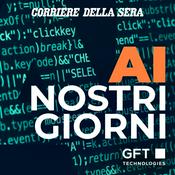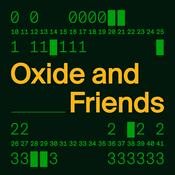83 episodi

Compiler collectives
04/08/2024 | 16 min
Compiler collectives are a PT2 feature where by compiler instances across multiple ranks use NCCL collectives to communicate information to other instances. This is used to ensure we consistently decide if inputs or static or dynamic across all ranks. See also PR at https://github.com/pytorch/pytorch/pull/130935

TORCH_TRACE and tlparse
29/04/2024 | 15 min
TORCH_TRACE and tlparse are a structured log and log parser for PyTorch 2. It gives useful information about what code was compiled and what the intermediate build products look like.

Higher order operators
21/04/2024 | 17 min
Higher order operators are a special form of operators in torch.ops which have relaxed input argument requirements: in particular, they can accept any form of argument, including Python callables. Their name is based off of their most common use case, which is to represent higher order functions like control flow operators. However, they are also used to implement other variants of basic operators and can also be used to smuggle in Python data that is quite unusual. They are implemented using a Python dispatcher.

Inductor - Post-grad FX passes
12/04/2024 | 24 min
The post-grad FX passes in Inductor run after AOTAutograd has functionalized and normalized the input program into separate forward/backward graphs. As such, they generally can assume that the graph in question is functionalized, except for some mutations to inputs at the end of the graph. At the end of post-grad passes, there are special passes that reintroduce mutation into the graph before going into the rest of Inductor lowering which is generally aware of passes. The post-grad FX passes are varied but are typically domain specific passes making local changes to specific parts of the graph.

CUDA graph trees
24/03/2024 | 20 min
CUDA graph trees are the internal implementation of CUDA graphs used in PT2 when you say mode="reduce-overhead". Their primary innovation is that they allow the reuse of memory across multiple CUDA graphs, as long as they form a tree structure of potential paths you can go down with the CUDA graph. This greatly reduced the memory usage of CUDA graphs in PT2. There are some operational implications to using CUDA graphs which are described in the podcast.
Altri podcast di Tecnologia
Podcast di tendenza in Tecnologia
Su PyTorch Developer Podcast
Ascolta PyTorch Developer Podcast, Il Disinformatico e molti altri podcast da tutto il mondo con l’applicazione di radio.it

Scarica l'app gratuita radio.it
- Salva le radio e i podcast favoriti
- Streaming via Wi-Fi o Bluetooth
- Supporta Carplay & Android Auto
- Molte altre funzioni dell'app
Scarica l'app gratuita radio.it
- Salva le radio e i podcast favoriti
- Streaming via Wi-Fi o Bluetooth
- Supporta Carplay & Android Auto
- Molte altre funzioni dell'app


PyTorch Developer Podcast
scarica l'app,
ascolta.
































